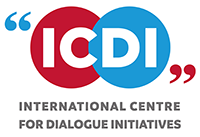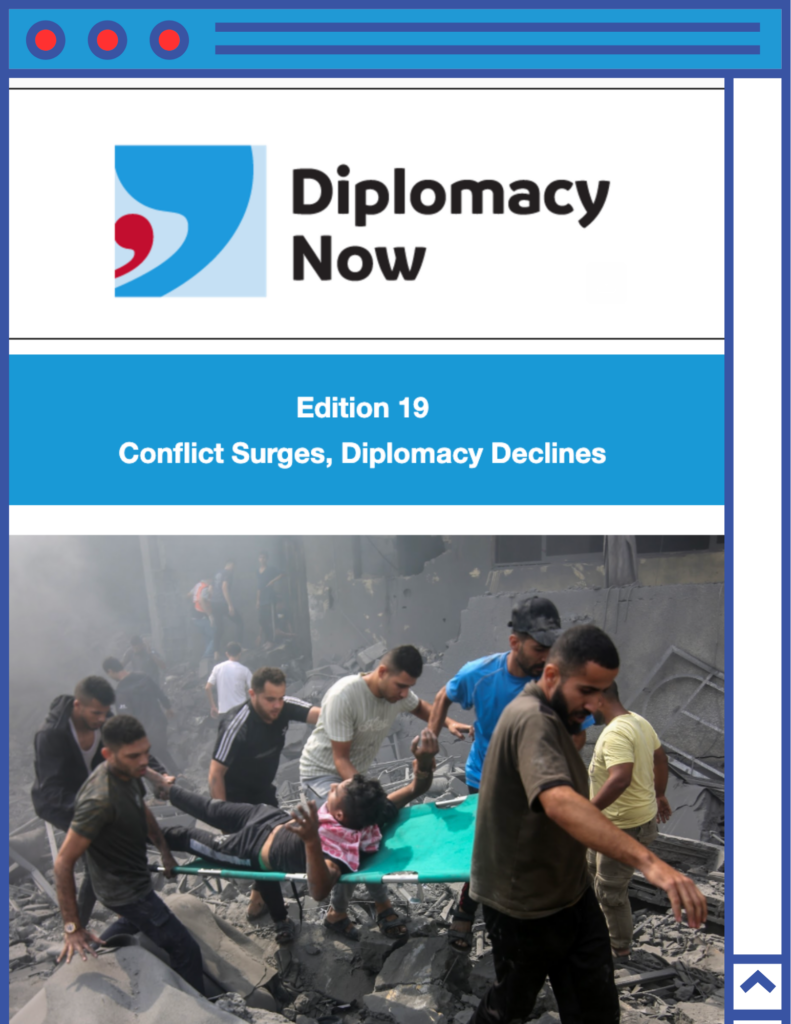“The Security Council is stuck in a time warp”, declared the United Nations Secretary-General António Guterres on 12 September 2024, in remarks to the Global Call on the Summit of the Future.
World leaders convened at the UN General Assembly for a seminal high-level event grandly entitled the “Summit of the Future.” According to the UN, its aim is “to forge a new international consensus on how we deliver a better present and safeguard the future.” It is anticipated that this “international consensus” will be achieved in three outcome documents tabled for adoption by the summit. Of these, The Pact for the Future is the principal one.
The Pact, which is now in its third iteration pursuant to ongoing inter-governmental negotiations, proposes a total of 60 “Actions” that, taken together, will “protect the needs and interests of present and future generations.” The focus of these Actions is wide-ranging, from Sustainable Development Goals (SDGs), climate change, and international peace and security, to digital cooperation, youth, and global governance. The Pact’s blueprint was laid out in the Secretary-General’s report to the 75th General Assembly session in 2020, “Our Common Agenda”, and subsequent “Policy Briefs”.
Pact for the Future offers nothing new on Security Council reform
Actions 42-44 of the Pact relate to UN Security Council Reform. Regrettably, a careful reading of these proposed “Actions” reveals very little, if any, innovations or new ideas on how to reform the Security Council so as to render it more fit for purpose for today’s challenges to international peace and security. It is, by and large, a summary of what has already been on offer for the past 30 years.
Attempts at structural reform of the Security Council, whether regarding its size, membership or the powers allotted to its members, have been a work in progress for over three decades. Yet there is scant prospect that this effort will be successfully concluded in this or indeed the next decade.
Nevertheless, in recent years significant advances have occurred in another area of Security Council reform: how the Council applies its rules and conducts its day-to-day business, known as working methods.
Why does the Security Council need to be reformed?
Reform needed to reflect the realities of our current world
There is universal recognition that the world today is very different than it was during the mid-20th century, when the UN was created in the aftermath of World War II. Similarly, there is universal acknowledgement that while the UN membership has nearly quadrupled from 51 to 193 states, its power structures – first and foremost, the principal organ entrusted by the UN Charter to maintain international peace and security, the Security Council – has remained unchanged.
The one notable reform was the expansion of its non-permanent (elected) membership from six to 10 in 1965, during the post-decolonization era. Every other initiative to make the Security Council better reflect today’s world remains contested.
Today, as in 1945, five countries – China, France, Russia, the United Kingdom and the United States – are permanent members of the Council, with veto powers over its decision-making. (The People’s Republic of China replaced the Republic of China – Taiwan – in 1971, while the Russian Federation, as the continuator to the USSR, has been a member since 1991.)
The Council’s 10 non-permanent members, elected by the General Assembly, serve two-year terms from various geographic groups.
Africa, Asia and Latin America still not represented among the permanent five
There is strong merit to the argument that the Council derives its legitimacy and credibility from its membership representation and how its power is exercised on behalf of the wider UN membership in fulfilling its mandate. Yet, 79 years on, Africa, Asia (except for China) and Latin America are not represented among the Council’s permanent members. The representation and power disequilibrium are within the Council, with only five veto-wielding permanent members out of the 15, as well as the lack of permanent representation from those three continents.
There are also valid arguments that if the aim of reforming the Council is to render it more effective and transparent, expanding its membership or vesting additional members with veto powers would not guarantee an achievement.
The current round of negotiations on Security Council reform started in 1993 in the General Assembly. The process was aptly titled “Open-ended Working Group on the Question of Equitable Representation on and Increase in the Membership of the Security Council and Other Matters related to the Security Council.” Since 2008, these negotiations have been conducted within the framework of “Inter-Governmental Negotiations” (IGN), an informal plenary of the Assembly, co-chaired by two member states selected annually. Three decades on, these discussions have yet to produce an agreed text that can form the basis of more focused negotiations.
A former permanent representative to the UN from Europe aspiring to Council permanent membership is said to have quipped that IGN stands for “It Goes Nowhere.” The sentiment is likely shared by many other diplomats.
Shortage of willpower rather than ideas on Security Council reform
There has been no shortage of ideas on what Security Council reform could and should look like. Among these recommendations are that the council be elected; there be a shift from the center of gravity on the maintenance of international peace and security from the Council to the General Assembly; the Council be enlarged, either by adding permanent, expanding non-permanent members to 21 to 27 countries, with varying configurations, or both. Other recommendations include abolishing the veto; extending the veto provision to potential new permanent members; semipermanent membership; longer terms for non-permanent members; and a variety of transitional arrangements.
In each proposition, two issues remain at the heart of Council reform discussions: equitable geographical representation and the use of the veto.
The “veto initiative” fails to put stop to abuse of vetoes by permanent five
In April 2022, soon after Russia’s invasion of Ukraine, the General Assembly adopted Resolution 76/262, which heralded a path toward greater accountability from Council permanent members who cast a veto. The resolution, known as the “veto initiative,” requires any permanent member who uses a veto to appear in the General Assembly within 10 business days of casting that vote to account for its action.
However, and contrary to the intentions of 76/262’s sponsors, the resolution has not tempered the use of the veto. Between April 2022 and March 2024, two years after its adoption, 15 vetoes were cast by three permanent members. Comparatively, between 2017 and 2019, at the height of the Syria crisis, 16 vetoes were cast.
It’s clear that the veto is being used with the same frequency as before the resolution, and that the initiative has had no perceptible impact on the willingness of permanent members to exercise the veto provision provided by the UN Charter. France and the UK have not wielded the veto since 1991. If the war in Ukraine was driving up Russia’s veto numbers in 2022 and 2023, Israel’s war in Gaza has seen a similar jump in US vetoes since October 2023.
While core reforms to the Security Council have been moribund for decades, there are those who rightly believe the most successful Council changes to date have addressed the Council’s working methods, which is one of the five clusters under the Inter-Governmental Negotiations purview.
Small victories for transparency and inclusiveness in the Council
In recent years, through the work of the Council’s Informal Working Group on Documentation and other procedural matters, numerous practices have been amended and codified that have enhanced the Council’s transparency and inclusiveness. Foremost, these changes have empowered the role of the 10 elected members to a greater degree.
Council members last year agreed to a set of guiding principles and practices related to an informal arrangement, known as “penholdership” (Note by the President S/2023/945.) It stipulates that any Council member should have the opportunity to be a penholder or a co-penholder. However, much of the language in the Note is aspirational rather than operational. So far, three permanent members – France, the UK and the US – still hold the pen on nearly 85 percent of the Council’s agenda items, allowing them to initiate Council decisions and actions, such as negotiating and producing resolutions, presidential statements, press statements.
Penholdership needs to be reformed without delay to make the Council’s work more inclusive and transparent, especially on country and region-specific agenda items where elected – and not permanent members – exclusively chair Council sanctions committees and where regional-group representatives on the Council can offer perspectives from their respective regions.
Council would benefit from reforming practices and working methods
The Council would benefit from reforming many other practices and working methods that would help to stop its plunging credibility and improve its accountability, including more frequent and effective engagement with the General Assembly and the wider UN membership; sharper analytical Security Council annual reports; greater responsiveness to issues raised by the wider membership; regular and less formulaic “Elements for the Press” after closed Council consultations; and clearer application of Rule 37 invitations to non-Council members to participate in open meetings.
As observed by Karin Landgren, the former Executive Director of Security Council Report, an independent publication, “What we are really talking about in working methods is power relationships, so it is an important area for change, it is reform by another name.”
Reforming the Council’s working methods should not be considered a substitute for the Council’s structural reforms but an equally important supplement to them. We should not lose sight of how such changes would enhance the Council’s role of maintaining international peace and security.
Will the Pact for the Future breathe new life into the long-awaited reform of the Security Council? Will the Summit of the Future provide the vehicle for achieving this elusive goal, or will it be yet another footnote in the long history of failed attempts to transform this vital multilateral institution? Only the future will tell.
An earlier version of this article appeared in PassBlue. Hasmik Egian served as Chief of Staff in the Office of the UN Special Envoy for Syria in 2014-2016, and Director of the UN’s Security Council Affairs Department from 2016-2022.




